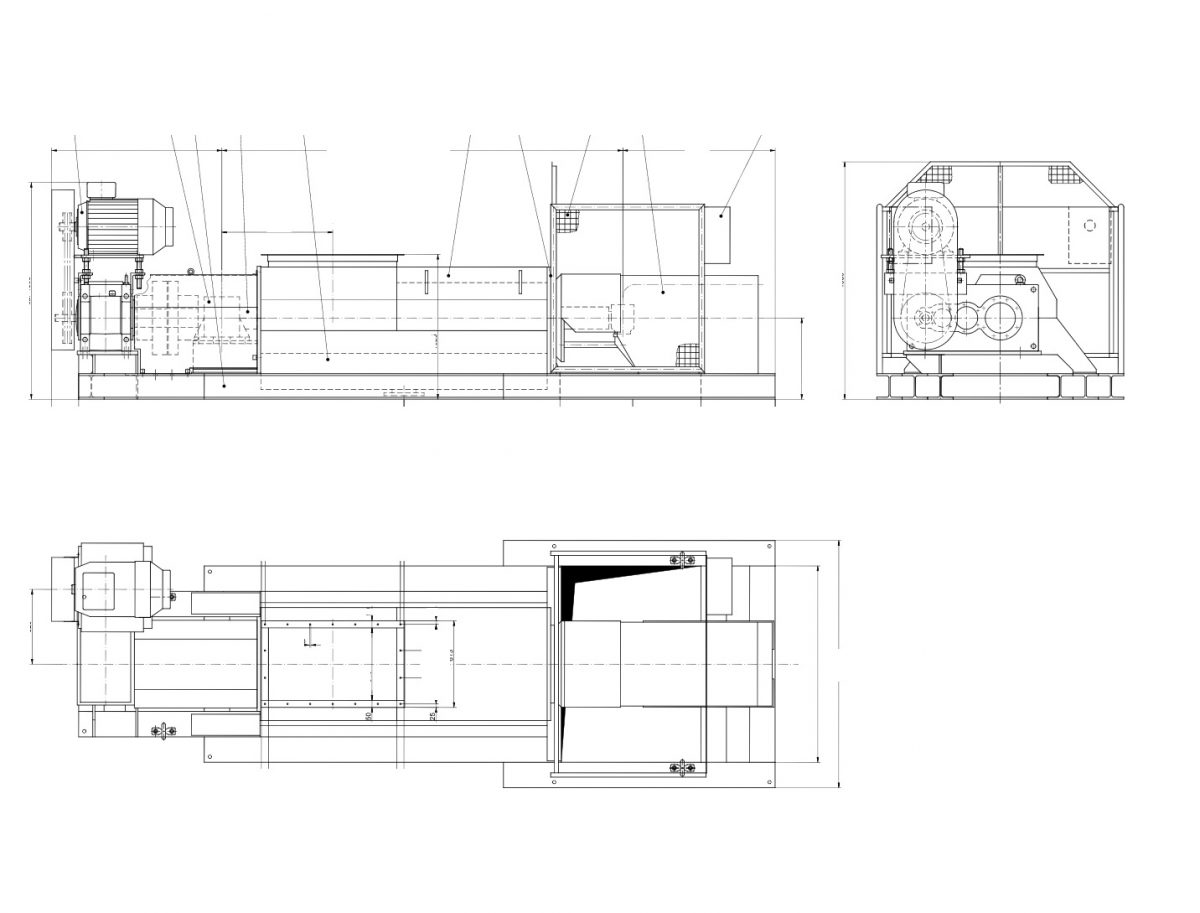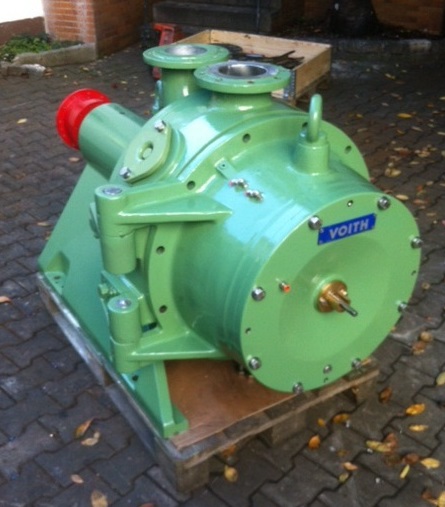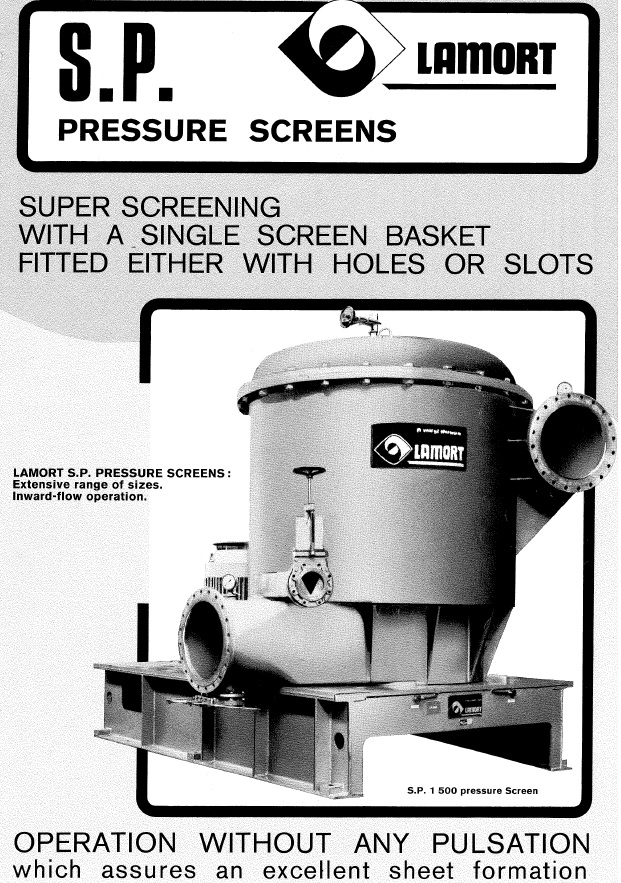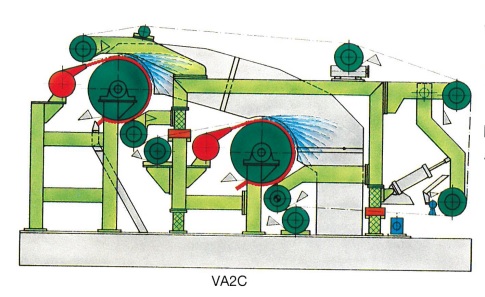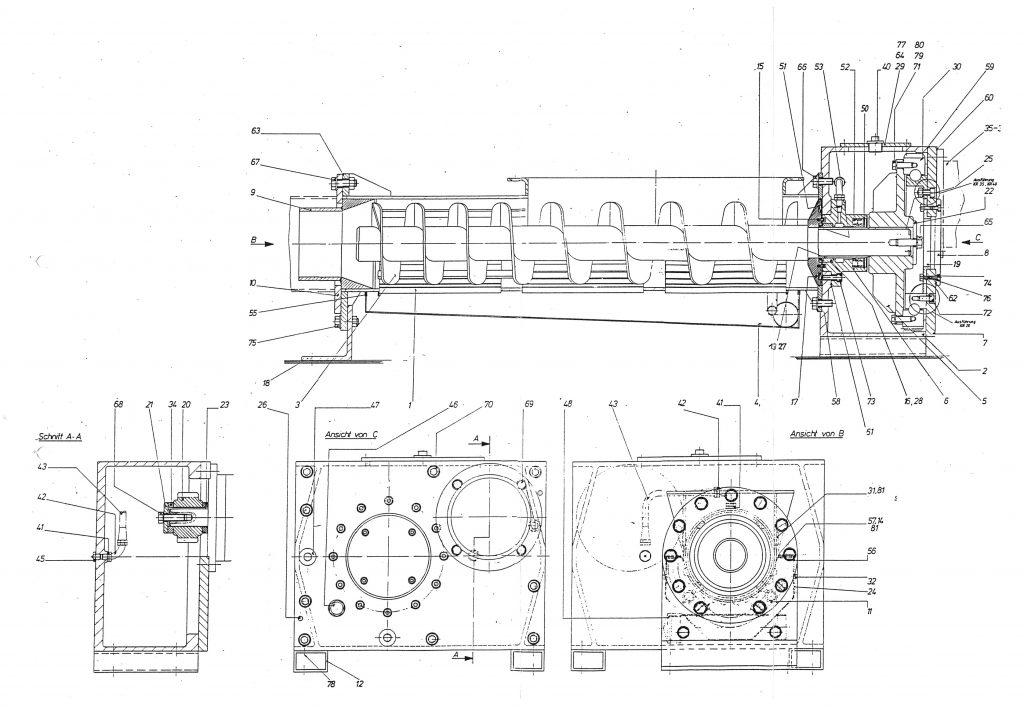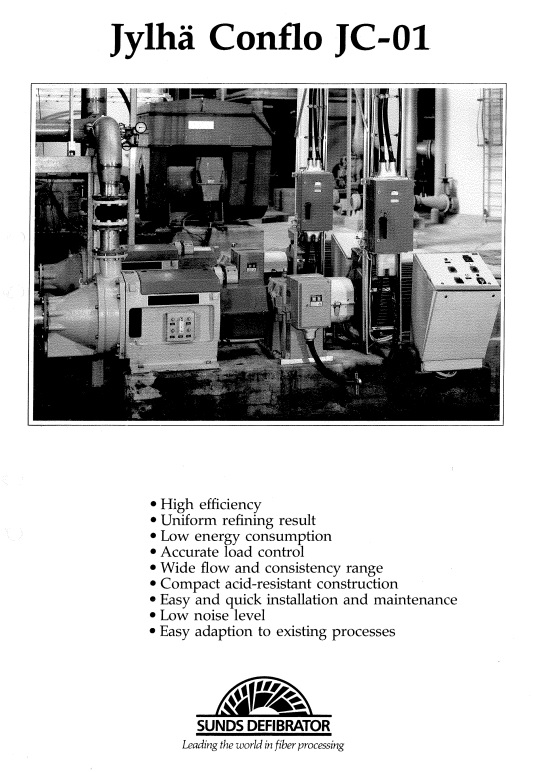Fields of application Kufferath
Akupress A
The Kufferath Akupress A is a screw press for the dewatering of pulp reject / rejects from the recycling. It was produced in various sizes.
Operation principals:
The rejects are fed to the screw via filler chute of the screw press and propelled by the screw towards the press exit. The exit opening is kept closed by a conical ring which opens only when the internal pressure exceeds the pressing pressure set by means of a pneumatic ballowcylinder.
The internal pressure is builtup by the screws action on the rejects to be dewatered. This pressure drives the free water of the rejects through perforations of the basket enclosing the screw. Solids are retained and expelled by the screw through the press exit aperture.
Characteristics
– A wide filler chute on the crew press gives an input free from blockages.
– Generous depth of the conveying spiral and its large pitch allow the input of large solid lumps.
– Both screw and basket are cylindrical and hence nonclogging. The pressing pressure is created solely by a conical throttling ring.
– The press opening is positively closed by the cone and this allows an input of very low consistency rejects.
– The cone is positioned by a pneumatic cylinder. This makes it possible to set the pressing pressure reproducibly at any level required independent of the throughput quantity. On the other hand, it also allows automatic adjustment of the throttling aperture (i.e. the press opening) to the throughput.
– The screw is supported by bearings at both ends. The whole press splits horizontally and this ensures simple maintenance.
– The perforated basket consists of two half-shells laid or welded into a supporting structure which takes up the applied stresses.
– The preforated basket is fully enclosed so that the presswater can be drained without splashing.
– Important components like motor, gears, bearings and pneumatic cylinder are not specially made but are standard products of reputable manufacturers. This simplifies stocking of spares.
– To prolong the life of the screw, all parts subjects to abrasion are clad in highly wear resistant material. Repeated renewal of this wear layer is easily possible.

Second hand / used machines from manufacturer Kufferath are available from Paptec:
https://www.paptec.com/list/search/kufferath/
Paptec supplies second hand/used machines for the pulp and paper industry
Spare parts for this machines are available from the original manufacturer Bellmer-Kufferath
http://www.bellmer-kufferath.de/

